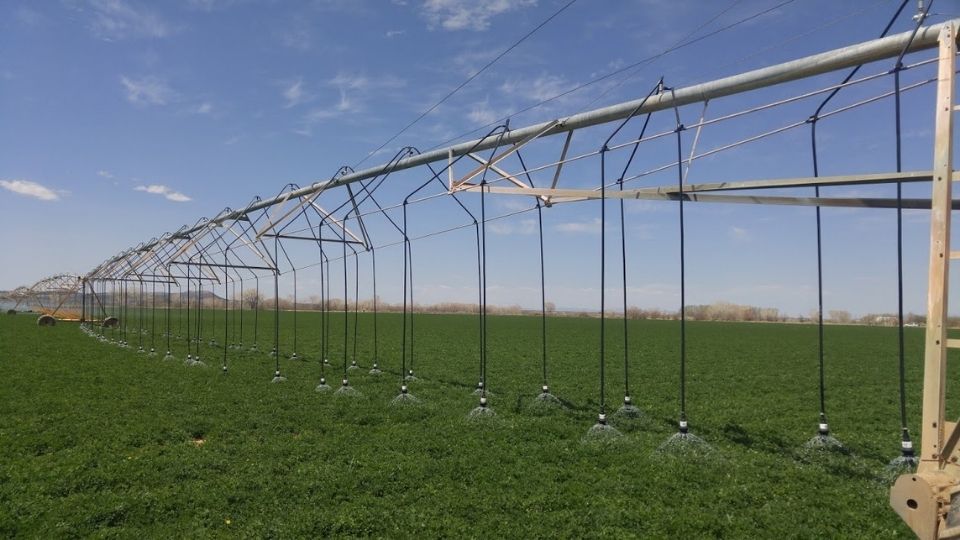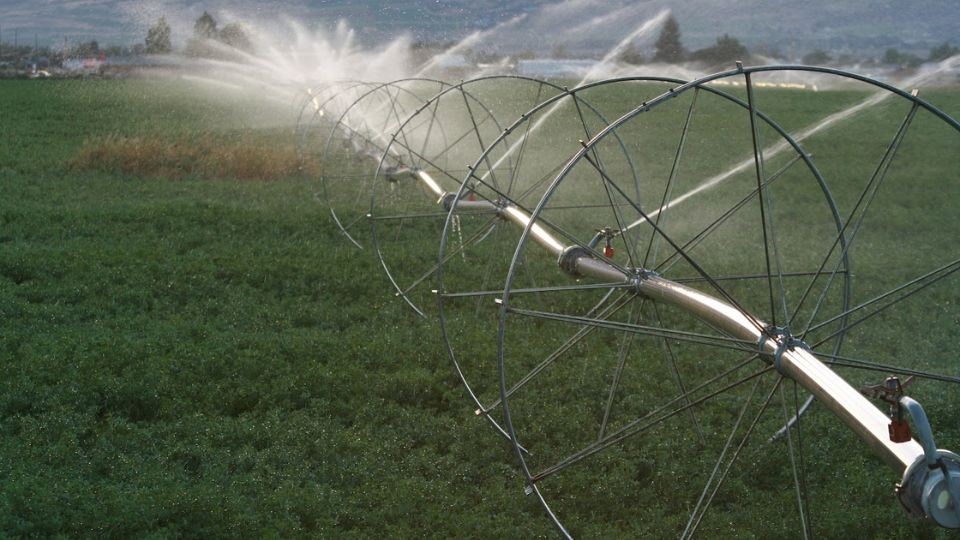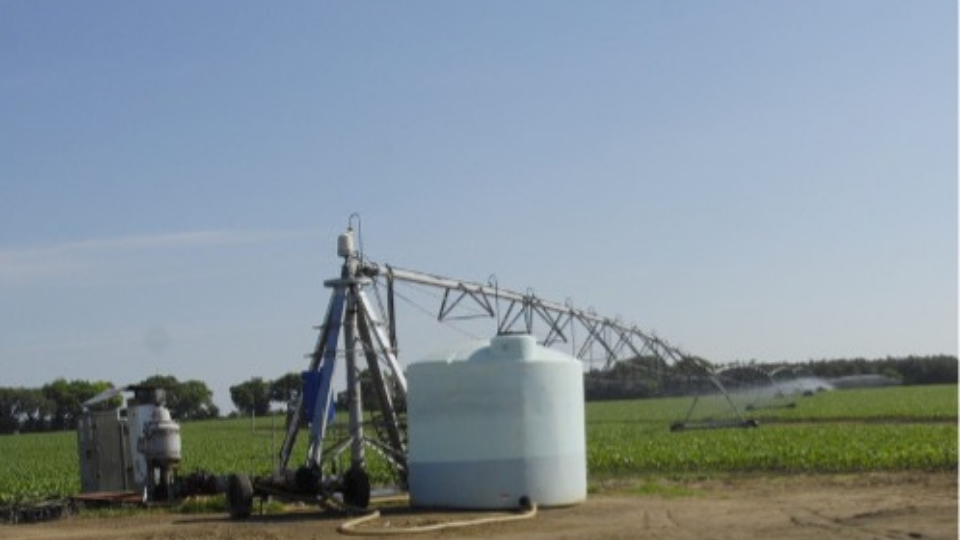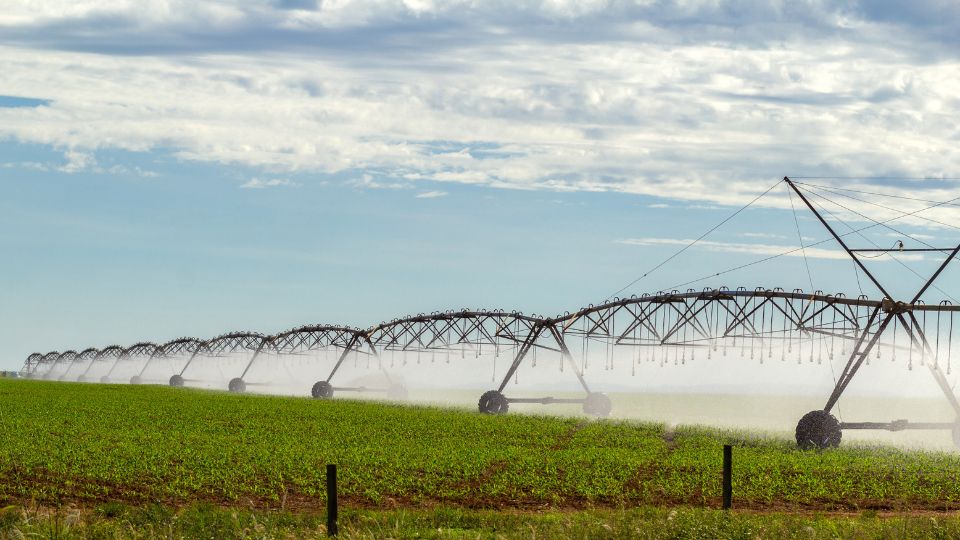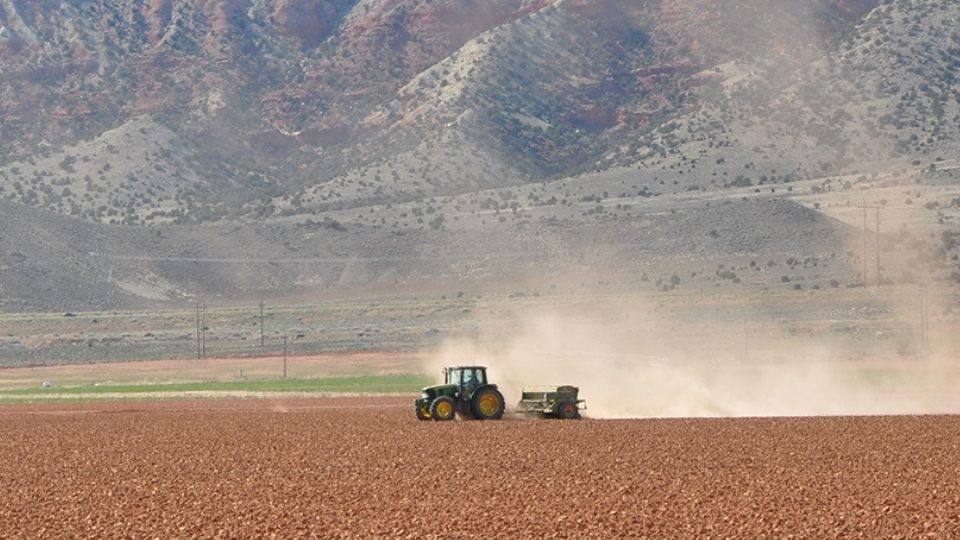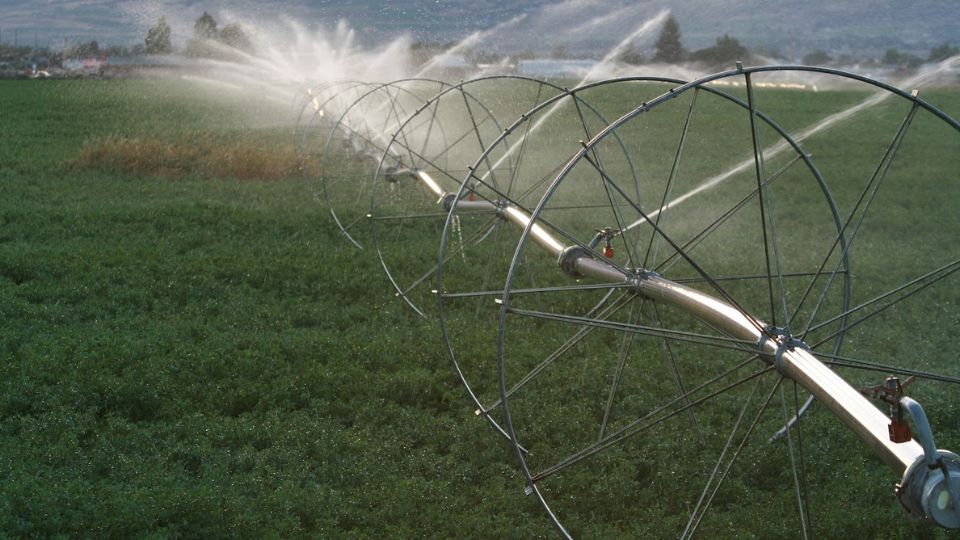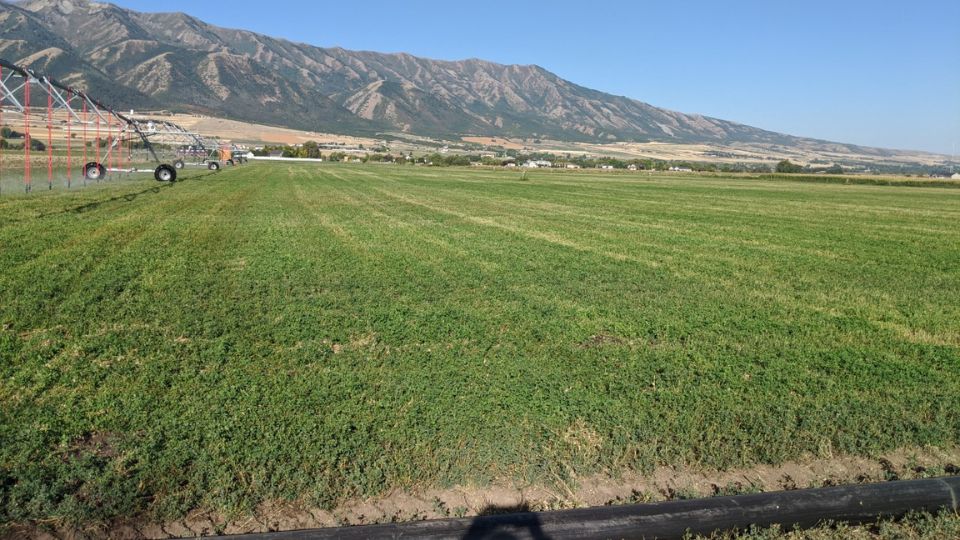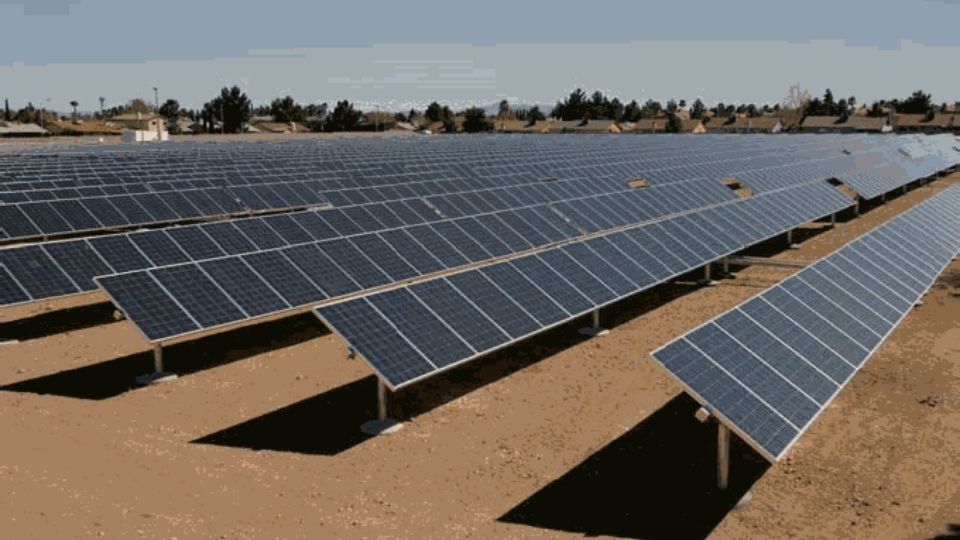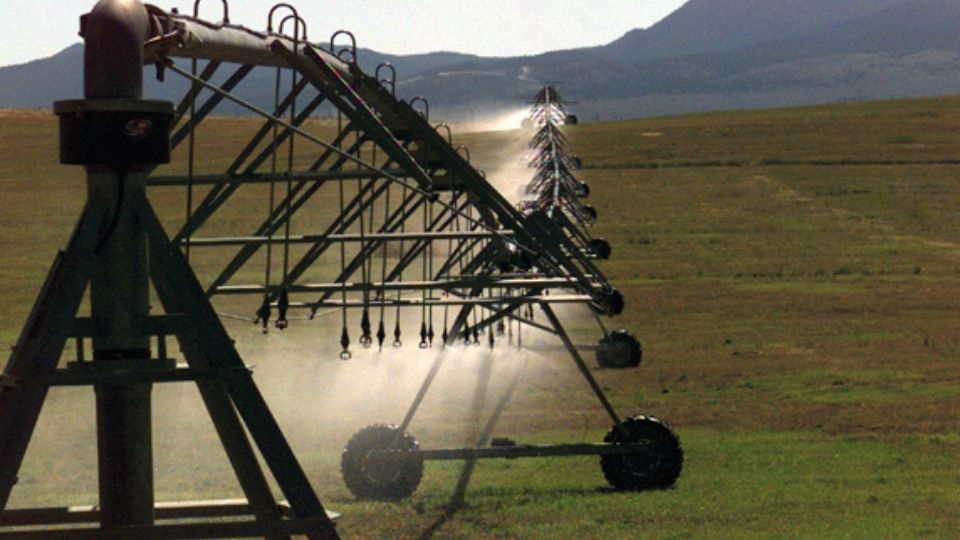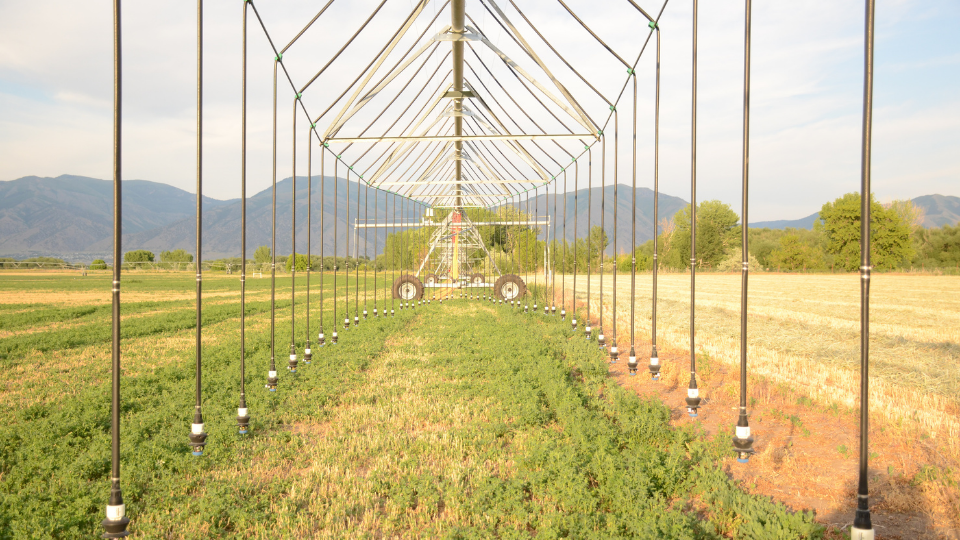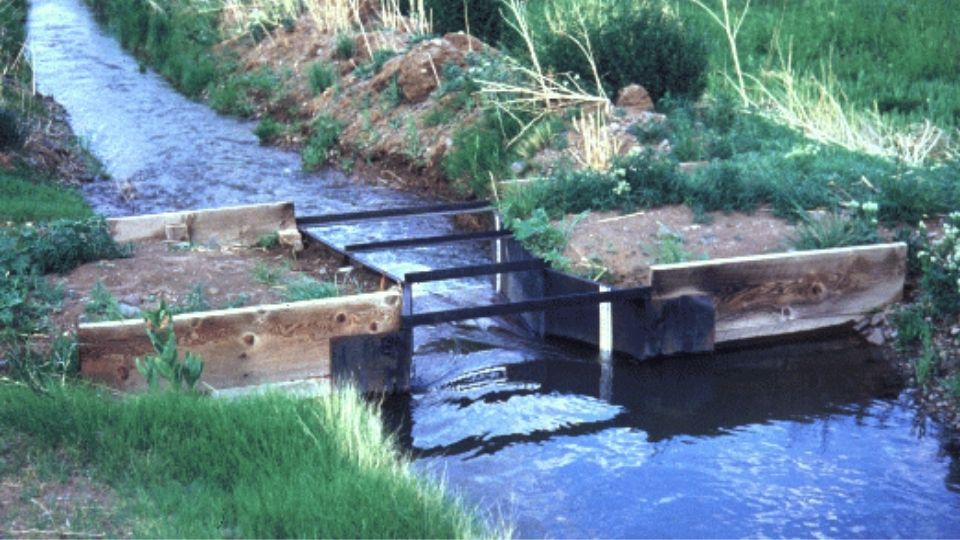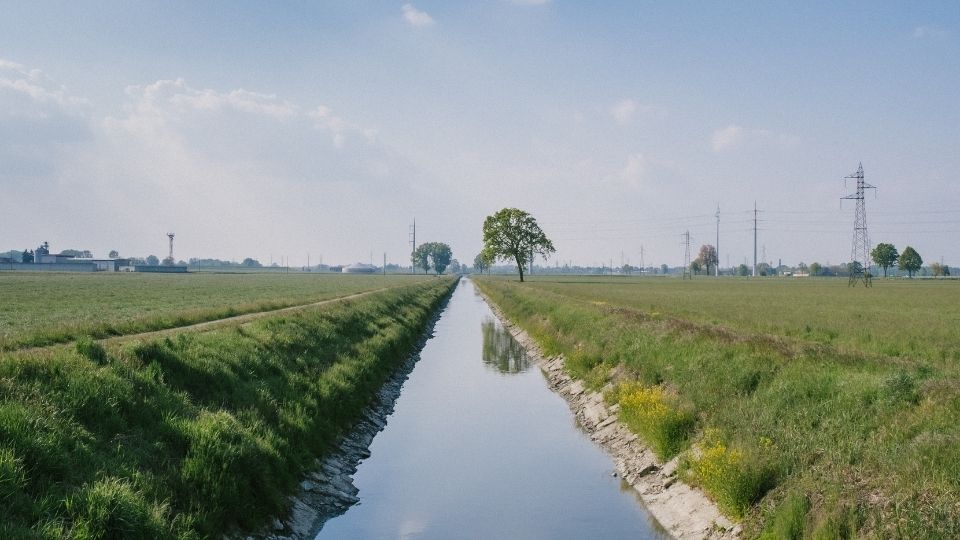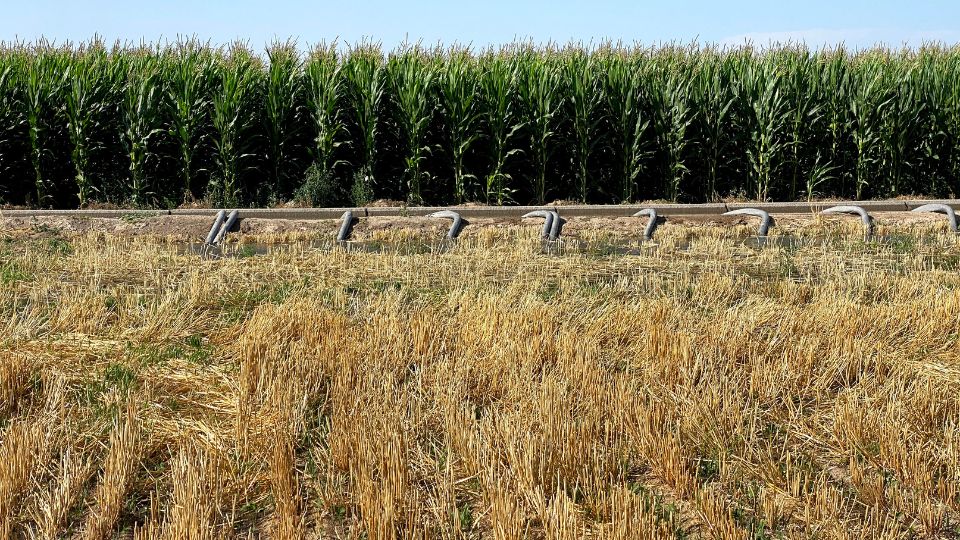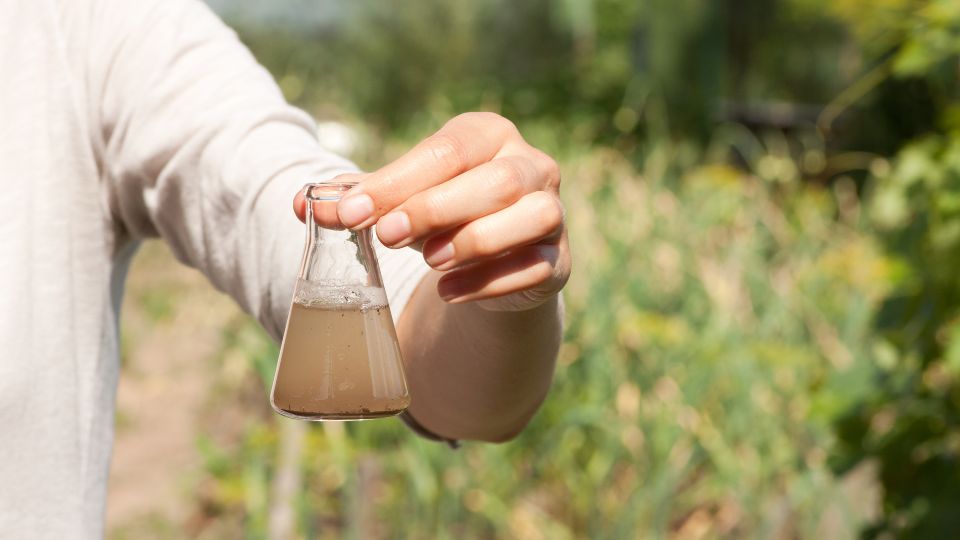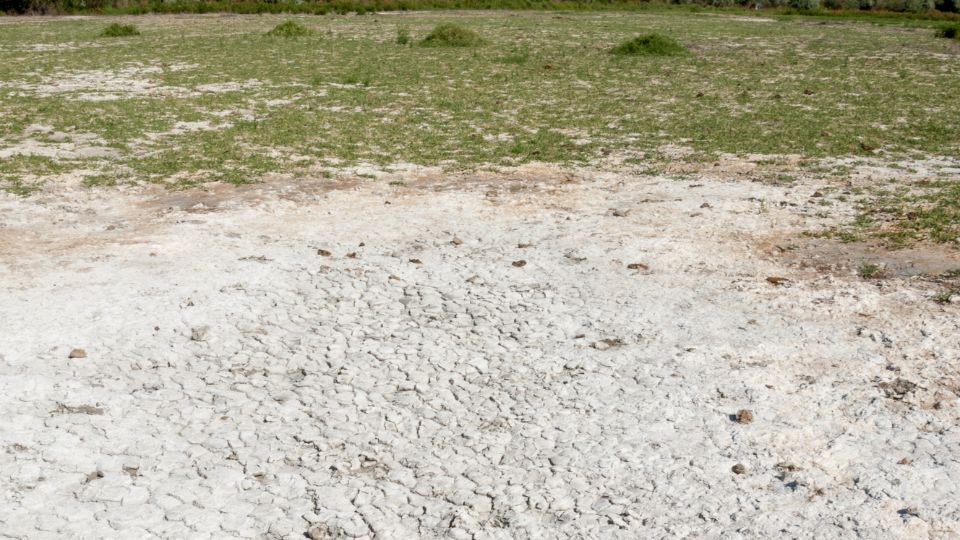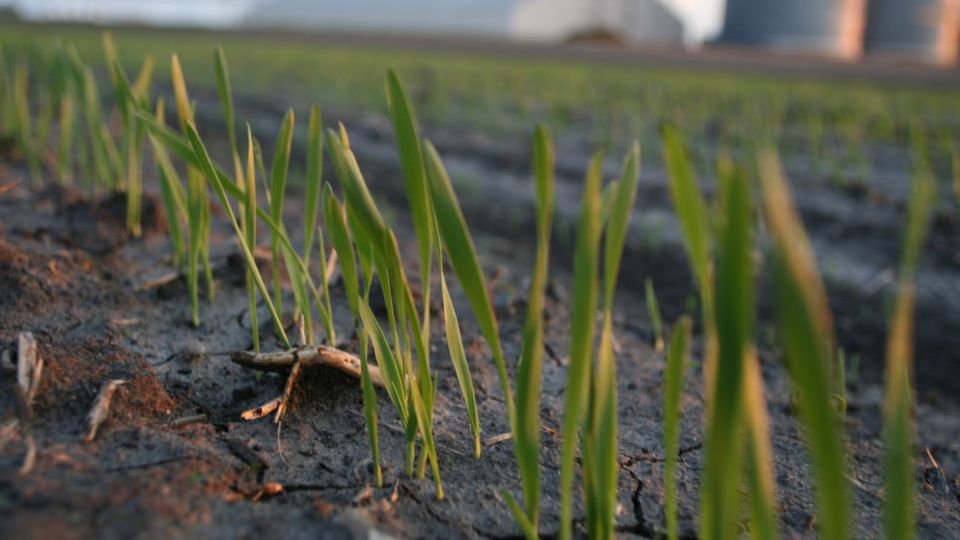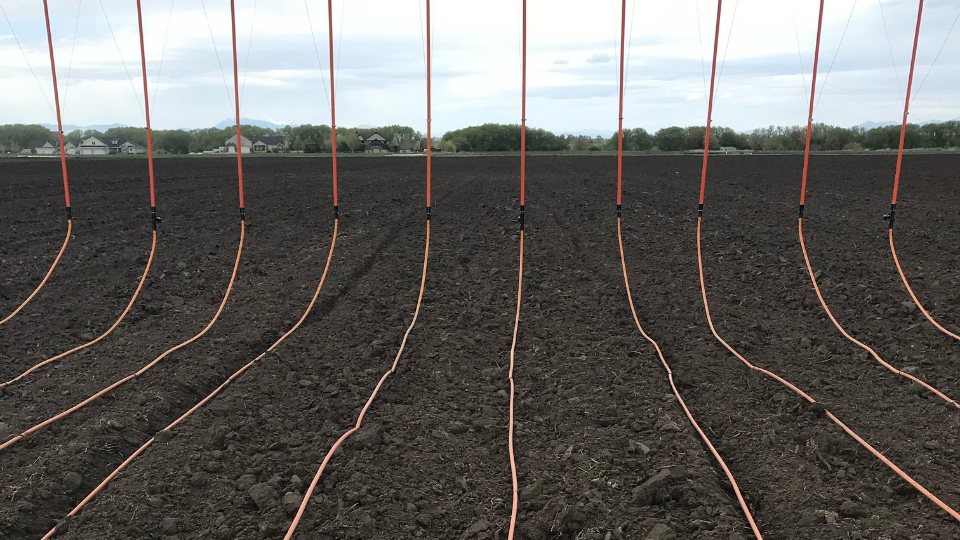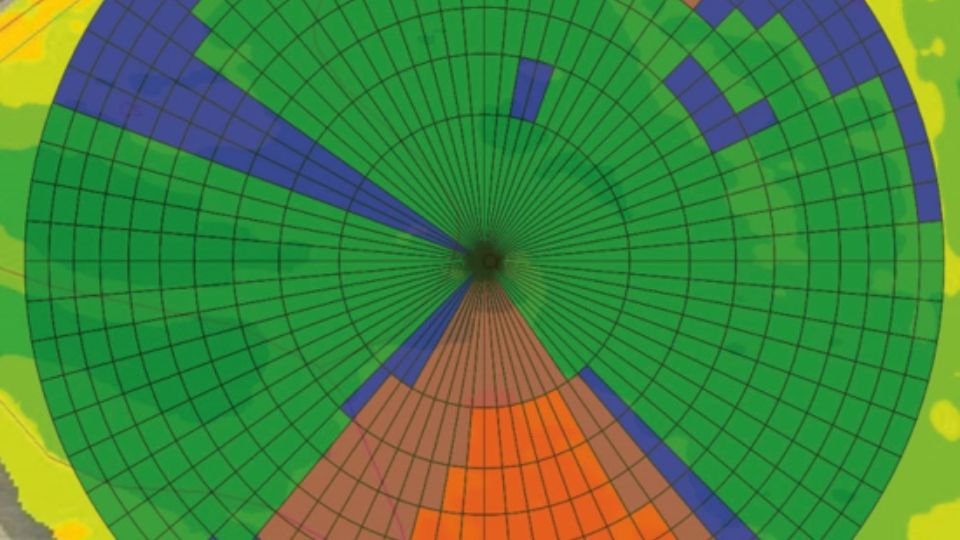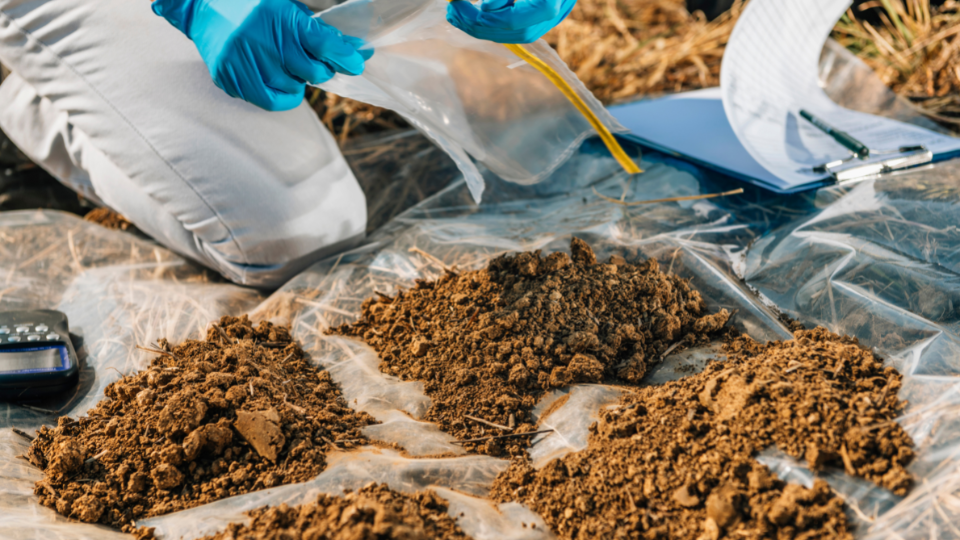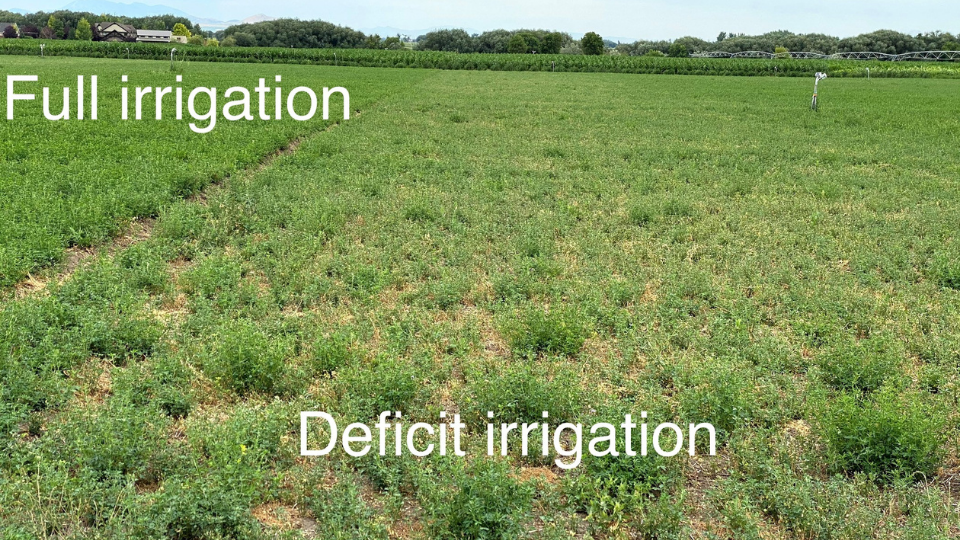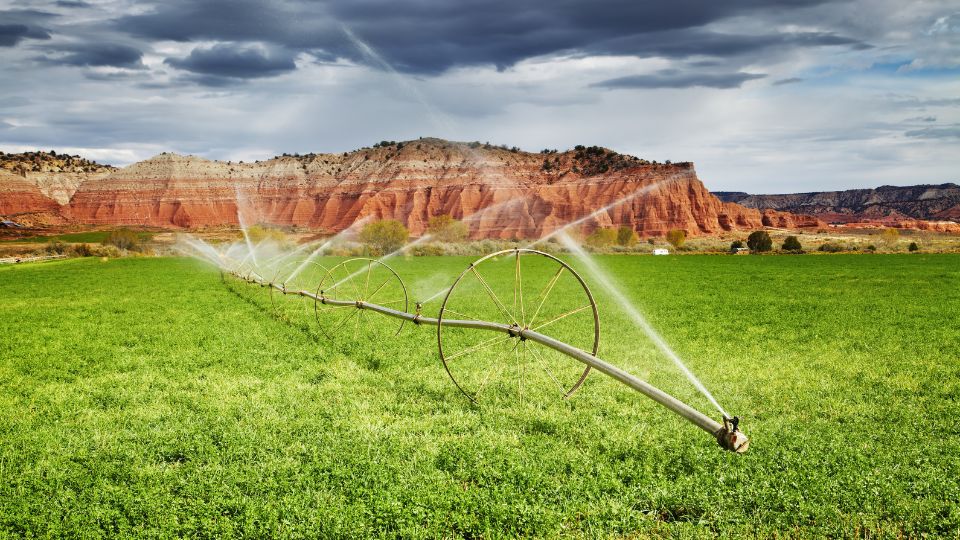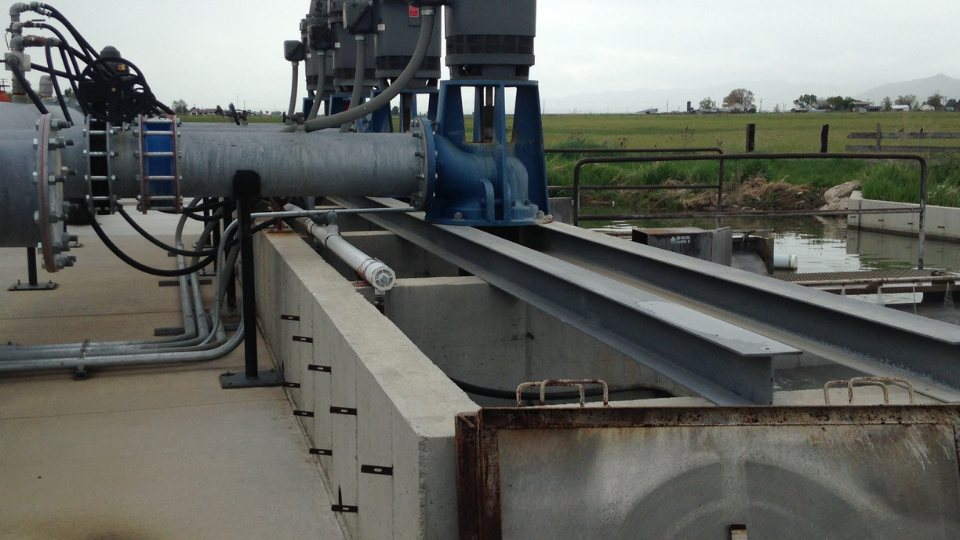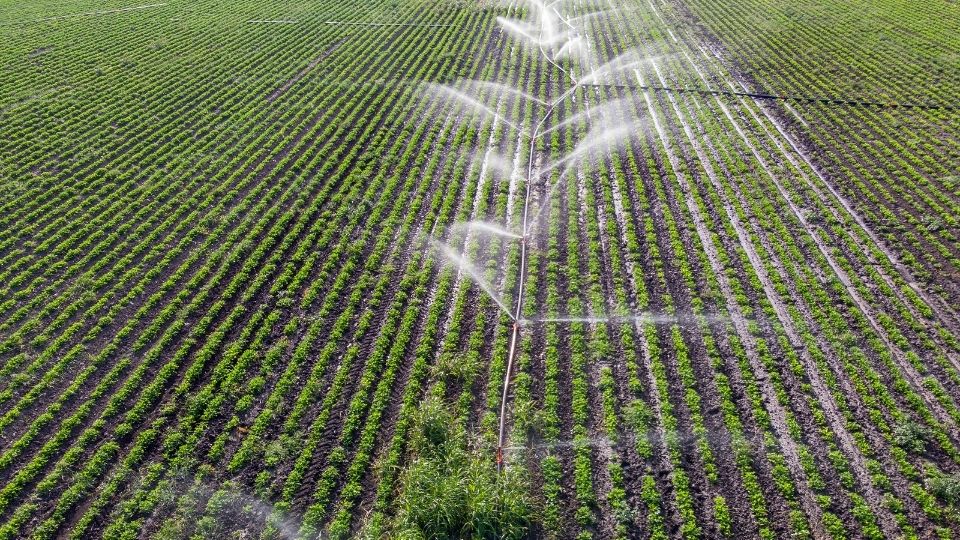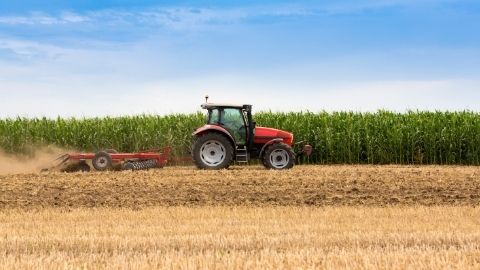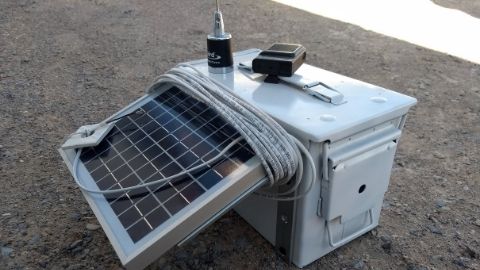Ten Considerations for Solar-Powered Irrigation in Utah
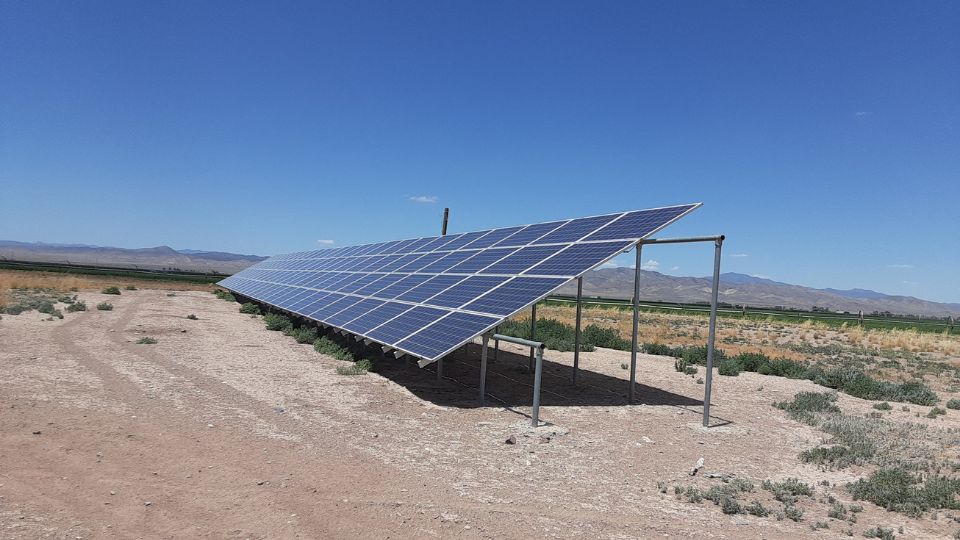
Introduction
Generating power from solar energy used to be one of the most expensive options in Utah ($0.175 per mega-watt hour [kWh] compared to $0.038 per kWh for combined cycle gas turbine plants) and subsequently accounted for about 0.01% of the energy production in 2009 (Utah Office of Energy Development [OED], 2014; Barry et al., 2009). This scenario is changing. According to the American Council on Renewable Energy (ACORE, 2021), the cost of solar power production went down by 90% between 2009 and 2020.
Utah has a sizeable solar energy generation potential, with average direct normal insolation (DNI) values ranging from 6 kWh/m2/day in northern Utah (excluding areas with slopes of 3% or more) to 7.4 kWh/m2/day in southern Utah (OED, 2014; Barry et al., 2009). According to the Western Renewable Energy Zones (WREZ) Phase 1 Report, a location that receives more than 6.5 kWh/m2/day of DNI and has a terrain slope less than 2% is considered viable for solar photovoltaics (PV) power generation. Thus, most parts of Utah receive enough solar radiation to make solar irrigation feasible. It has already been demonstrated that solar-powered irrigation (SPI) can be economically feasible in Utah (Curtis, 2010). Specific examples of different SPI systems from around the world were also shown to be financially viable (Sass & Hahn, 2020). This feasibility may be even more pertinent now when taking into consideration the various financial incentives offered to those turning to solar-powered systems.
Highlights
- Solar-powered irrigation (SPI) is becoming more cost effective and practical to consider on the farm as the cost of alternative sources of energy are rising.
- Irrigators can now benefit from incentives such as tax credits to help offset costs.
- Investing in solar provides more independence from price fluctuations and energy shortages.
- Considerations for SPI systems include energy demand of the irrigation system, type and value of crops grown, available incentives and support, cost and accessibility of alternative energy sources, and multiple uses of the generated solar power energy.
Over the last few years, SPI has become more cost effective and practical as the cost of energy such as gasoline, diesel, propane, or standard grid electricity (SGE) has continued to rise, whereas the establishment cost for solar-powered systems has continued to decrease (Hicks, 2020; Ran et al., 2018; IRENA, 2019; ACORE, 2021). Solar-power technology is also rapidly maturing and becoming more reliable, especially battery storage technology and solar panels in terms of energy storage capacity and energy output efficiency (Hicks, 2020; Luo et al., 2015; Denholm et al., 2017; Ran et. al., 2018). Investing in solar energy gives the irrigator the ability to generate their own energy on the farm rather than relying completely on energy companies and fluctuating markets. As a result, there is renewed interest in solar-powered energy (Denholm et. al., 2017; Ran et al., 2018; UCE, 2021).
This guide will discuss SPI system advantages and disadvantages, considerations for effective systems, and incentives and resources available to those exploring or implementing these systems in the form of 10 questions about SPI.
1. What are advantages and disadvantages of solar irrigation?
Table 1 summaries the potential advantages and disadvantages of SPI relating to Utah irrigators.
Table 1.
Advantages and Disadvantages of Using Solar-Powered Irrigation (SPI)
| Advantages | Disadvantages |
|---|---|
|
|
Sources: Lakatos et al., 2011; IRENA, 2016; FAO, 2017; Sass & Hahn,2020; and FAO, 2018.
2. Where should I start when designing solar-powered systems?
One of the first considerations for SPI systems is the energy demand of your irrigation system. The demand ultimately affects the size, effectiveness, and costs associated with SPI systems. Pumping is by far the most significant power demand in an irrigation system. Pumping power demand depends upon the flow rate of water pumped, water lift (for example, out of a well), the output pressure of the pump, and the efficiency of the pump and electric motor. The flowrate of the pump is dependent upon the crop type(water requirements and growing season) and total acreage irrigated. Pumping pressure is dependent upon elevation and distance of the water source from fields. The crop type also affects the time of the year the crop is grown and length of growing period. This will impact the overall effectiveness of the SPI system and the type and size of the solar system. The crop value is also important as some crops have greater profit potential.
Elevation, latitude, shading, and slope aspect (direction the slope faces) affect the radiation amount received and the solar energy amount generated.
Another consideration is the type of irrigation system to be used. Infield irrigation systems with lower operational pressure heads require less energy and a smaller-sized solar-power generation system. Drip, micro sprinklers, and low-elevation precision application (LEPA) sprinklers can help. Farmers in central and southern Utah (for example, in the Milford area) are even tapping into large scale SPI by powering center pivots using solar energy through a net metering arrangement with Rocky Mountain Power (see Table 2). An off-grid, non-net-metering center pivot design concept example is cited in Sass and Hahn (2020). It is a 9-span 148-acre pivot operating at a pressure of 2.5 bars (36 psi) with a flow rate of 3,300 m3/day. It is powered by 436 solar panels producing 105 kWp total power. Each panel has a capacity of 240Wp. It must be noted, however, that based on issues discussed above, the actual number of solar panels required for a SPI system is situation-specific. Note that peak power (expressed as kWp or Wp) is the maximum power that can be produced by a solar panel under standard conditions and kWh describes the amount of energy consumed.
3. How do I select the right components?
Solar panels are the most durable component of SPI and usually last between 25 and 30 years. Solar panels also differ in their power generation efficiency and lose efficiency with time (Table 1). While there are different types of solar panel systems available (see this YouTube video, "Solar Panel Comparison: What to Consider Before Buying” by City Prepping for more information), the two major types include mono crystalline and poly crystalline panels (World Bank, 2018).
Configurations and Components
Solar panels can be configured in different ways. Rigid solar panels are more suited for permanent installations while the blanket and the foldable types are portable and more suited for temporary site installation. The temporary installation may include situations where panels need to be moved around to meet pumping needs in various locations, to supply power during emergencies, or to prevent theft.
Floating solar panel systems have been used in some places and can improve energy generation by about 10% as water has a cooling effect on the panels and the floating solar panels also decrease evaporation of the water body (Sass & Hahn, 2020; FAO, 2018). These can be installed on dams, ponds, and on top of irrigation canals. Increased efficiency can help increase the system’s solar power generation capacity.
Sun trackers and monitoring systems, such as Maximum Power Point Tracking (MPPT) and other electronic/software features, improve power generation efficiency by between 25% and 35% annually (Sass & Hahn, 2020). Solar panels therefore can be installed as fixed or can be sun-tracking. Examples of sun-tracking systems include single axis and dual axis systems (Figures 1 and 2; see also Salman et al., 2022). Some Utah farmers we interviewed said they were having maintenance problems with dual axis tracking systems as they have many moving parts that increase opportunity for breakdowns. These farmers report few (if any) maintenance problems related to the moving parts of the single axis solar-tracking systems.
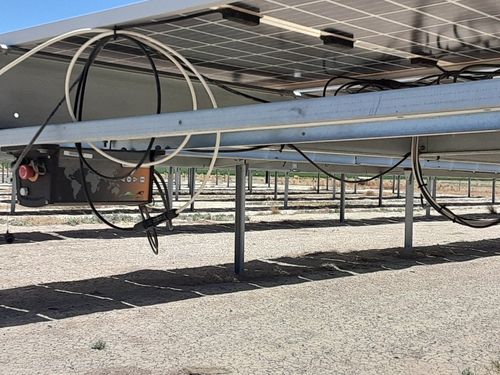
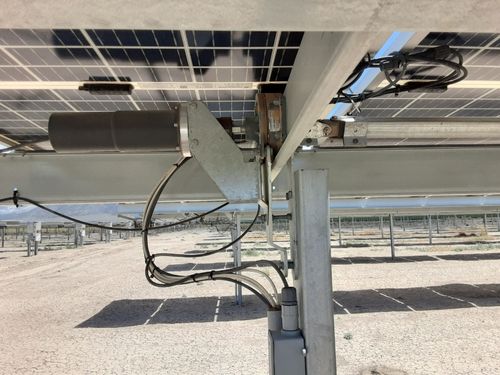
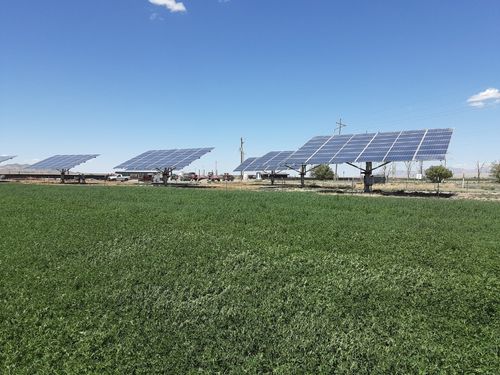
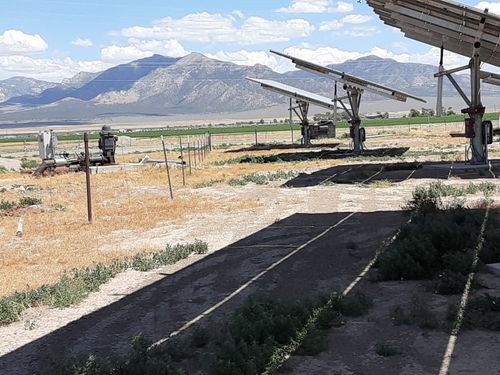
Other components of SPI include power invertors and battery storage systems (Salman et al., 2022). These two components, based on interviewed Utah farmers, are some of the weakest links of the system as they fail frequently. Inverters and batteries also differ in their capacity, efficiency, and cost. Batteries lose their storage capacity over time. Be sure to compare cost, expected life, and quality of these components when evaluating SPI installation and maintenance costs. Net metering arrangements have the benefit of eliminating the battery storage requirements.
4. How do I select the right pumping system?
Pumping systems differ in their suitability for a particular pumping situation. Some are more suitable than others for solar pumping, ground water pumping, or surface water pumping (see Salman et al., 2022). Choose the system that is more suitable for your conditions:
- Submersible water pumps are most commonly used for groundwater sources; these pumps are limited in capacity.
- Line shaft turbine pumps are most commonly used for groundwater pumping and have the advantage of being capable of much larger discharge rates and lift/pressure production than other pump types.
- Centrifugal pumps are best suited for surface water bodies or booster pumps and can be slightly less efficient than turbine pumps.
Using pumps that can allow variable motor speed and pump volume during sunny and cloudy periods can also help improve the system efficiency if multiple fields are supplied by a single pump. The fact sheet titled Variable Frequency Drives for Irrigation Pumps (Yost et al., 2020) provides more information on variable frequency drives (VFDs) for pumps. VFDs ensure the pump will adequately deliver the right amount of water and meet the pressure requirements while being efficient in converting the supplied solar energy to meet pumping needs. VFDs are beneficial if flow rate or required lift/pressure are not constant.
PV pumps usually need to be sized larger than conventional pumps to compensate for the lower performance when insolation is low (Sass & Hahn, 2020). This may also contribute to comparatively high investment costs.
Safeguard mechanisms to prevent over pumping also need to be considered to reduce water wastage that is pumped and not used. Over pumping is very common with solar pumping as little to no additional direct energy costs are incurred during pumping. Refer to the paper titled Determining the Optimum Solar Water Pumping System for Domestic Use, Livestock Water, or Irrigation (Vick & Clark, 2009) for more detail on determining the optimum solar water pumping system.
5. Should solar be used as a sole power source or in combination with other sources?
The nature of use of the SPI system is an important question to ask when deciding whether to use solar power alone, in combination with other sources, or for multiple uses. Consider first whether you intend to use direct pumping or battery back-up power systems. Using battery storage can make the SPI substantially more expensive to buy and operate. At the same time, solely relying on direct solar-powered pumping means that power availability and adequacy will be affected by weather conditions, and you can only irrigate during the daytime hours when there is enough solar radiation to produce the required power.
Multiple uses of generated solar energy, such as irrigation, heating, lighting, crop storage facilities, air conditioning, and livestock watering can help offset energy costs on the farm. These influence the degree of integration of the solar power with other power sources and hence the cost of establishing and running the SPS.
Excess power generated and power that is generated during off-peak times or seasons can sometimes be sold. Net metering can be a viable and practical way of achieving this. It can enable drawing power from the standard grid when irrigating at night or when it is cloudy and limited or no solar power is available.
Another scenario to consider is jointly using land for power generation and agricultural use to generate higher returns per unit area of land. Energy generation, systems operation, and maintenance could be subcontracted to solar energy professionals so irrigators can focus on their agricultural enterprise. In this case, the farmer could be allocated the energy they need, and the extra could be sold with proceeds shared between the contracted company and the farmer. Be sure to enter a legally binding agreement between parties in this scenario (UMass-CEE, 2022).
6. How does crop management make solar systems more efficient and affordable?
Crop and water management practices play a considerable role in making SPI efficient, cost-effective and sustainable. The following water management practices should be considered when practicing SPI:
- Crop selection – Higher value crops can help improve the profitability of the farming venture, and hence, reduce the payback time for the SPI. Drought-tolerant crops and crops with low crop water requirements may also help in this regard.
- Increase irrigation system efficiency – Reduce water losses during conveyance, storage, and water application, and hence, pumping energy requirements.
- Irrigation scheduling – Improved irrigation scheduling and efficiently monitoring the duration of irrigation can minimize over irrigation and reduce pumping and energy use.
7. What will it cost and what are the returns?
Costs associated with SPI systems (establishment, ownership, and operation and maintenance costs) as compared to alternatives like standard grid electricity, propane, gasoline, diesel, and natural gas need to be considered. Generalized SPI costs are difficult to estimate because every situation is different. However, many complete SPI systems may cost between $2,000 and over $1 million to install and $80/kW to $300/kW per year to maintain (see Table 2 for more details). The return on investment of SPI also depends on how SPI costs compare to other energy sources – all of which vary greatly over time. Battery storage systems are also expensive to buy and significantly increase operation and maintenance costs. It is therefore recommended to avoid them in SPI systems unless they are essential. The other major factor in cost comparisons among energy sources is availability and accessibility of energy alternatives. For example, in areas where there is no grid electricity or where the connecting point is far from the farm, it could be worthwhile to evaluate the cost of establishing infrastructure for drawing grid electricity to the farm and the cost of using alternatives such as diesel, natural gas, or propane compared to those of establishing and running SPI.
The internal rate of return (IRR) of investment for different SPI projects assessed around the world ranged from 20% to 221%. There were a few cases with negative IRRs (Sass & Hahn, 2020). The same researchers also emphasized that due to the comparatively high capital requirements for SPI systems, optimal system designing and intensified high-value agricultural production are required in order to achieve returns on investment that are higher than those of conventional solutions. It is important to keep in mind that the analysis of the financial viability of a SPI investment should also include the entire irrigation system set-up, including the agricultural activities.
Table 2.
Solar-Powered Irrigation (SPI) System Components and Cost Estimates as of October 2022
| System component | Estimate price range |
|---|---|
| PV panels | Cost can range from $1 to $4.5/watt-peak (Wp) because of economies of scale; large projects have lower costs. |
| Mounting structure | Cost depends on the type and quality of the mounting structure and on whether it is a fixed or sun-tracking system. |
| Storage battery systems | Cost starts around $300/kWh of storage for systems up to 14kWh storage capacity. (Consult websites for battery storage reviews, such as https://www.ecowatch.com/solar/best-solar-batteries.) |
| Inverters | Cost starts around $500/kW for a PV system between 0.1 and 20 kWp. |
| Controllers | Cost starts around $50/kW for pumps with power requirements up to 5hp. |
| Monitoring system | Operated by the irrigator on-site or online, it allows readings of pressure, water flow, and water level and helps to assess the system performance. Specific system functions and site conditions determine the cost. |
| Maintenance costs | Cost depends on system components. For a PV system between 0.1 and 20 kWp, costs can range from $80–$300/kW per year. Annual costs for regular technical maintenance, repairs, and spare parts for SPI systems may also be estimated at about 2% of the underlying initial investment sum. Some farmers in central Utah have reported changing center drives for dual axis sun-tracking systems at least twice in 2 years. This significantly increases operation and maintenance costs to even higher figures than indicated above. |
| The balance of system (BOS) and related services | The BOS refers to all hardware components other than the main components. It is comprised of the PV array mounting structure, cables/wires, switches, fuses, piping, water meters, data loggers, etc. It can account for 20%–50% of total capital costs. |
| Installation and related services | Can range from 5%–25% of capital costs. |
| Pumps | Cost depends on pump type and size. The pumps are usually the same as those powered by grid electricity. Pumps with direct current (DC) are preferred for solar pumping, especially in small acreage irrigation as they have higher overall efficiencies. |
| Infield irrigation system | Cost depends on system type and acreage. Examples include, but are not limited to, micro sprinklers, drip, center pivots, and surface irrigation. |
| Complete SPI system | Total overall costs for a complete SPI system can vary from $2,400 for a small-scale system comprised of a submersible pump, 300Wp panels secured on a 10-foot high, fixed stand with a controller and a 1-acre drip system (FAO, 2018) to over $1 million for an 840 kWp capacity, net metering system with single axis sun tracking and monitoring connected to a 125-acre center pivot powered by a 130 hp borehole pump equipped with a VFD (according to interviewed Milford farmers in central Utah). |
Notes. An electric motor requires 0.746 kW for every 1 hp.
The values are estimates and actual costs can be affected by prevailing economic conditions, supply chain challenges, quality and brand names of components and specific SPI system requirements.
Sources: World Bank, 2018; Shouman et al., 2016; Wazed et al., 2017; FAO 2018; GIZ and FAO, 2018; Sass & Hahn, 2020; IRENA, 2021; Utah farmers
8. What financial and technical supports are available?
The use of rebates, incentives, and other financial support mechanisms can make it more financially manageable to install and operate a SPI system as the upfront establishment costs can be substantial. In Utah, there are several financial incentives for those intending to buy solar-powered systems, including tax credits, rebates, grants, and special low interest loans (Table 3).
Table 3.
Some Financial and Technical Support Options for Solar Power and Other Renewable Energy Sources
| Type | Name | Description | Links |
|---|---|---|---|
| Federal tax credit | Federal Investment Tax Credit (ITC) | A 10% to 30% federal tax credit for solar systems. | |
| Utah tax credit | Alternative Energy Development Incentive (AEDI) | For large scale systems, 2 MW (2,000 kW) and above, this is a fixed post-performance credit of 75% for 20 years. | |
| Utah tax credit | Renewable Energy Systems Tax Credit (RESTC) | The commercial version of the tax credit can be accessible through a net metering arrangement but not necessarily. It covers 10% of the purchase cost or $50,000 (whichever is less). | |
| Federal incentive | USDA-NRCS Environmental Quality Incentives Program (EQIP) | This voluntary program helps agricultural producers receive financial and technical assistance to implement structural and management conservation practices. | |
| Federal or state loan | Agriculture Resource Development Loan program (ARDL) | This program is administered by the Utah Department of Agriculture & Food (UDAF) under direction of the Conservation Commission. It is a special loan program with interest rates ranging from 2.5% to 3% per year, with loan terms of 7 or 15 years. Maximum loan to value is 70% of project cost. | |
| Private loan | Utah C-PACE | This is an energy efficiency financing program for modernizing buildings, with financing provided by private capital providers in an open market. | |
| Grant or loan | USDA Rural Development - Rural Energy for America Program (REAP) | This program provides loan financing and grant funding to farmers (with >50% income from farm) and small rural businesses for renewable energy improvements. |
General information |
| Incentive | Rocky Mountain Power Net Metering or Load Control Programs | Irrigators can earn cash incentives for curtailing electricity during peak demand periods. |
Discounts
Discounts related to bulk-purchasing arrangements can be significant in reducing upfront purchasing and installation costs. For example, in 2013, Summit Community Solar (SCS) helped 60 homeowners in Summit County install 331 kW of rooftop solar panels. The community’s bulk-purchasing power enabled participants to receive upwards of 35% discounts off average installation prices, before incentives. It is, therefore, worthwhile to explore the possibility of teaming up with fellow irrigators close by interested in introducing solar-powered irrigation and discuss bulk purchasing discount opportunities with contractors.
Financial assistance for irrigation best management practices (BMP)
Financial assistance for irrigation best management practices (BMP) adoption can be available depending on the farm situation, from farm bill conservation programs like the Environmental Quality Incentives Program (EQIP), Conservation Stewardship Program (CSP), and Agricultural Management Assistance (AMA). These programs award funding or technical support to qualified agricultural producers that implement conservation practices according to predefined guidelines established by the program (Stubbs, 2016).
9. What are the regulatory and permit requirements?
There are regulatory (for example, land use regulations) and permit requirements, and permitting processes and fees for establishing various types and sizes of solar-powered systems. In some locations, there is a power-generating system size limitation in place for various commercial and residential systems. For example, Bountiful City Light and Power clients may have this limitation. Verify the policies in your area and consult your tax advisors before investing in solar energy generation. For details on the current legislation, permit and process requirements for establishing solar-powered irrigation systems or solar-powered systems on farmland in Utah, refer to these resources:
- Renewable Energy Systems Tax Credit (Utah Office of Energy Development)
- Business Energy Investment Tax Credit (DSIRE® at the North Carolina State University Clean Energy Technology Center)
- Rocky Mountain Power
- Solar Incentives for Utah Businesses (Utah Energy Hub by Utah Clean Energy)
10. Which pitfalls should I look out for?
Be careful about how you select suppliers and contractors for solar-powered irrigation systems. North American Board of Certified Energy Practitioners (NABCEP) is a nonprofit body entrusted by the U.S. government to set the training and accreditation standards for solar installers nationwide. Using a NABCEP-certified installer is a mandatory requirement for many solar incentive programs throughout the country. The Utah Energy Hub provides a list of qualified Utah contractors.
Summary
The economic feasibility of running SPI has long been confirmed. The cost of establishing owning and running a SPI system have continued to decrease while the cost of alternatives such as gasoline, diesel, propane, and standard grid electricity have continued to increase. This added to available financial incentives mean that using SPI has become more cost effective, financially viable, and convenient. There are, however, various technical, social, economic, financial, and legal issues that should be taken into consideration before deciding to switch to or use solar power as a complimentary or stand-alone source of power for irrigation and other farm uses. Once these are considered, SPI can often be economically sustainable.
References
- American Council on Renewable Energy (ACORE) (2021). 2021 annual report. https://acore.org/wp-content/uploads/2022/08/ACOREs-2021-Annual-Report.pdf
- Barry, J., Hurlbut, D., Simon, R., Moore, J. & Blackett, R. (2009). Utah renewable energy zones task force phase 1 report: Renewable energy zone resource identification [Publication 09-1]. Utah Geological Survey. https://ugspub.nr.utah.gov/publications/misc_pubs/MP-09-1.pdf
- City Prepping (n.d.). Solar panel comparison: What to consider before buying [Video]. YouTube. https://www.youtube.com/watch?v=kP8KO1gWOjk
- Curtis, K. R. (2010). Economic feasibility of solar photovoltaic irrigation system use in Great Basin forage production. Utah State University Extension. https://digitalcommons.usu.edu/cgi/viewcontent.cgi?article=1065&context=extension_curall
- Denholm, P., Eichman, J., & Margolis, R. (2017). Evaluating the technical and economic performance of PV plus storage power plants. National Renewable Energy Laboratory. NREL/TP-6A20-68737. https://www.nrel.gov/docs/fy17osti/68737.pdf
- DSIRE (n.d). Rural Energy for America Program (REAP) Energy Audit and Renewable Energy Development Assistance (EA/REDA) Program. U.S. Department of Agriculture. dsireusa.org
- Food and Agriculture Organization of the United Nations (FAO). (2017). Climate-smart agriculture solar-powered irrigation systems: A clean-energy, low-emission option for irrigation development and modernization [Practice brief]. https://www.fao.org/3/bt437e/bt437e.pdf
- FAO. (2018). The benefits and risks of solar-powered irrigation - A global overview. https://www.fao.org/documents/card/en/c/I9047EN/
- Gesellschaft für Internationale Zusammenarbeit (GIZ) and FAO. (2018). Toolbox on solar powered irrigation systems (SPIS). https://energypedia.info/wiki/Toolbox_on_SPIS
- Hicks, W. (2020). Declining renewable costs drive focus on energy storage. National Energy Renewable Laboratory (NREL). https://www.nrel.gov/news/features/2020/declining-renewable-costs-drive-focus-on-energy-storage.html
- International Renewable Energy Agency (IRENA). 2016. Solar Pumping for Irrigation: Improving Livelihoods and Sustainability, The International Renewable Energy Agency, Abu Dhabi. Available at: https://www.irena.org/publications/2016/Jun/Solar-Pumping-for-Irrigation-Improving-livelihoods-and-sustainability
- IRENA. (2019). Future of solar photovoltaic: Deployment, investment, technology, grid integration and socio-economic aspects [A Global Energy Transformation: Paper]. International Renewable Energy Agency, Abu Dhabi. https://irena.org/-/media/Files/IRENA/Agency/Publication/2019/Nov/IRENA_Future_of_Solar_PV_2019.pdf
- IRENA. (2021). Renewable power generation costs in 2020. International Renewable Energy Agency, Abu Dhabi. https://www.irena.org/publications/2021/Jun/Renewable-Power-Costs-in-2020
- Lakatos, L., Hevessy, G., & Kovács, J. (2011). Advantages and disadvantages of solar energy and wind-power utilization. World Futures, 67(6), 395–408. https://doi.org/10.1080/02604020903021776
- Luo, X., Wang, J., Dooner, M., & Clarke, J. (2015, January). Overview of current development in electrical energy storage technologies and the application potential in power system operation. Applied Energy, 137(1), 511–536. https://doi.org/10.1016/j.apenergy.2014.09.081
- Natural Resources Conservation Service (NRCS). (n.d). Environmental quality incentives program (EQIP). U.S. Department of Agriculture. https://www.nrcs.usda.gov/wps/portal/nrcs/main/national/programs/financial/eqip/#
- Ran. F., Remo, T., & Margolis, R. (2018). 2018 U.S. utility-scale photovoltaics-plus-energy storage system costs benchmark [NREL/TP-6A20-71714]. National Renewable Energy Laboratory. https://www.nrel.gov/docs/fy19osti/71714.pdf
- Salman, M., Abdelfattah, A., Ahmad, W., & Simongini, C. (2022). The use of solar energy in irrigated agriculture: A sourcebook for irrigation water management with alternative energy solutions. Rome. https://doi.org/10.4060/cb8459en
- Sass, J., & Hahn, A. (2020). Solar powered irrigation systems (SPIS) - Technology, economy, impacts. Gesellschaft für Internationale Zusammenarbeit (GIZ), Bonn, Germany. https://energypedia.info/images/7/74/Solar_Powered_Irrigation_Systems_%28SPIS%29_-_Technology%2C_Economy%2C_Impacts.pdf
- Shouman, E. R., El Shenawy, E. T., & Badr, M. A. (2016). Economics analysis of diesel and solar water pumping with case study water pumping for irrigation in Egypt [ISSN 0973-4562]. International Journal of Applied Engineering Research, 11(2), 950–954. http://www.ripublication.com
- Stubbs, M. (2016). Irrigation in U.S. agriculture: On farm technologies and best management practices. Congressional Research Service. https://sgp.fas.org/crs/misc/R44158.pdf
- University of Massachusetts Clean Energy Extension (UMass-CEE) (2022). Contract negotiations for solar PV facility agreements [Fact sheet]. https://ag.umass.edu/clean-energy
- USDA – Rural Development. (n.d). Rural energy for America program (REAP) renewable energy systems & energy efficiency improvement guaranteed loans & grants. https://www.rd.usda.gov/programs-services/energy-programs/rural-energy-america-program-renewable-energy-systems-energy-efficiency-improvement-guaranteed-loans
- Utah Clean Energy (UCE). (2021). 20 years of impact [2021 annual report, anniversary edition]. https://utahcleanenergy.org/wp-content/uploads/sites/12/2022/04/2021-Annual-Report-Special-Edition.pdf
- Utah Office of Energy Development. (2014). Governor Gary R. Herbert - March 2, 2011 Energy initiatives & imperatives: Utah’s 10-year strategic energy plan 2.0. [Updated plan]. https://energy.utah.gov/wp-content/uploads/10-Year-Strategy_Energy.pdf
- Vick, B., & Clark, R. (2009). Determining the optimum solar water pumping system for domestic use, livestock water, or irrigation [Conference session]. In Proceedings of the 38th American Solar Energy Society Annual Conference, Buffalo, NY.
- Wazed, S. M., Hughes, B. R., O’Connora, D., & Calautit, J. K. (2017). A review of sustainable solar irrigation systems for Sub-Saharan Africa. Renewable and Sustainable Energy Reviews, 81(1) January 2018, 1206–1225. http://dx.doi.org/10.1016/j.rser.2017.08.039
- Western Governors’ Association and U.S. Department of Energy, (2009). Western renewable energy zones (WREZ) phase 1 report - Mapping concentrated, high quality resources to meet demand in the Western Interconnection’s distant markets. https://www.energy.gov/sites/prod/files/oeprod/DocumentsandMedia/WREZ_Report.pdf
- World Bank. (2018). Solar pumping: The basics. International Bank for Reconstruction and Development. https://documents1.worldbank.org/curated/en/880931517231654485/pdf/123018-WP-P159391-PUBLIC.pdf
- Yost, M., Young, T., Allen, N., Larson, D., & Holt, J. (2020). Variable frequency drives for irrigation pumps [Fact sheet]. Utah State University Extension. https://digitalcommons.usu.edu/cgi/viewcontent.cgi?article=3106&context=extension_curall
Published December 2022
Utah State University Extension
Peer-reviewed fact sheet
Photo Credit
All photos were provided by authors.
Authors
Ngonidzashe Mufute, Matt Yost, Burdette Barker, Kalen Taylor, Mark Nelson, Randall Violett, and Jody Gale
Related Research






